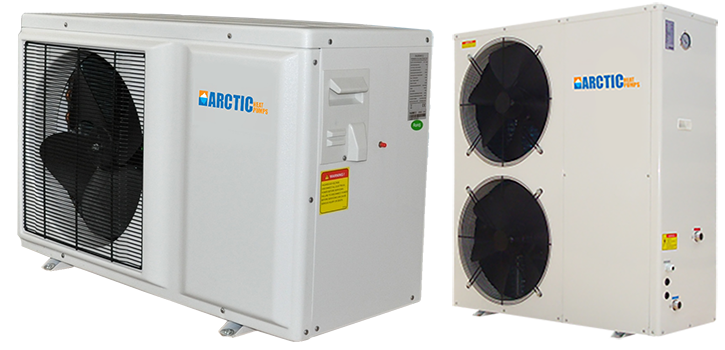Air-to-water heat pump systems provide efficient heating and cooling to your home, especially if you live in a moderate climate. All you need is a proper installation of a system. The heat pump can provide one and a half up to three times more thermal energy to a home than the electricity it uses. It can be due to heat transfer by the heat pump, unlike other combustion heating systems.

Most United States and Scandinavian countries use air source heat pumps. But they don’t work well in freezing temperatures. So even if the climate is sub-freezing in winter, running air to water heat pumps can cost you more for your heating requirements. However, air-to-water heat pump systems specifically designed for cold climates have started to deliver outstanding results.
If you want to learn how the air-to-water heat pump unit works, you can check out the post below for a better understanding.
How Do Air to Water Heat Pumps Work?
Generally, investing in a complete and modern heat pump system provide you with enormous energy saving and minimized carbon dioxide emissions. In addition, the heat produced by the system is safe and economical because of its integrated water heater, immersion heater, circulation pump and climate system in the indoor unit.
An outdoor unit fetches heat from outside, and the refrigerant circulates throughout the closed piping system and starts transferring heat from the source to the indoor unit. Therefore, the working principle can be simplified as follows:
- First, the outdoor unit fetches heat from the surrounding air and transfers the heat energy to a coolant or a refrigerant.
- A compressor is present in the heat pump, which helps increase the refrigerant temperature.
- After that, the refrigerant starts transferring heat to a hot water storage tank through a heat exchanger.
- Then, the hot water goes to the radiators and faucets.
- The cold water moves to the storage tank.
- The refrigerant transfers the cold water from the tank to the outdoor unit.
When you reverse the above-discussed process, the refrigerant in the outdoor unit fetches the heat from the water and releases it to the surrounding environment. This way, the heat pump can keep your home cool if required.
The Advanced Technologies in Air Source Heat Pumps –
Likewise every new technology sector, advancements always remain close by. Even the heat pump industry is no exception. That’s why the latest advanced heat pump systems have emerged enough to draw the attention of most households. One of them is the cold climate heat pump technology.
This heat pump comes with a two-speed, two-cylinder compressor ensuring efficient operation and a backup booster compressor responsible for working efficiently even when the temperature is minus 40 degrees. This system is proven to be an efficient, high-performing unit for cold climate conditions.
Conclusion –
An air-to-water heat pump is a futuristic investment as it significantly incorporates going green and using a clean heating system. Even if the initial costs are high, you can expect the benefits one year after your investment. You won’t regret installing this system at your home. If you want to learn more about air-to-water heat pumps, please contact Arctic Heat Pumps at 1-866-800-8123.


- -25C heat pump
- air source heat pump
- chiller for pools
- Chillers for Swimming Pools
- cold weather heat pumps
- Heat Load Design
- Heat Load Design
- Heat Loss Design Services
- Heat Pump
- Heat Pump Cold Weather
- Heat Pump for Hot Water
- Heat Pumps
- heat pumps in Nova Scotia
- Hydronic Air Handler
- Inverter Heat Pump
- Inverter Heat Pump
- radiant floor cooling
- radiant floor Design
- radiant floor Design
- radiant floor Design
- Spa Heat Pump
- Swimming Pools